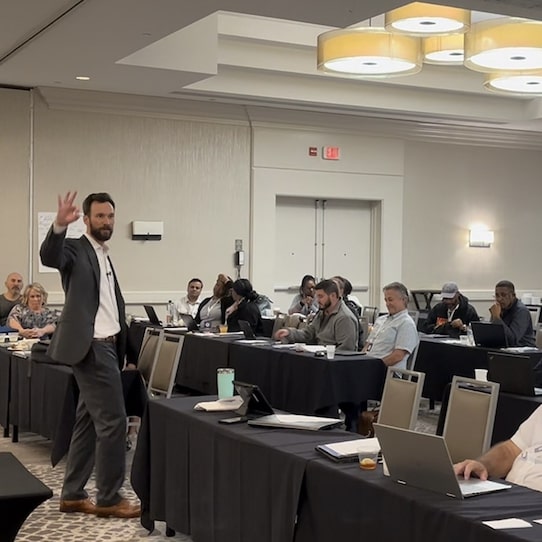Brian Peterson dropped outta college to pursue real estate in 2005. For the next three years, he did pretty well for himself, wholesaling and flipping single family homes. As you know, in ’08, the housing market wet the bed, which set him back a bit. But he rebuilt his cash flow by acquiring and renting out multifamily homes. He was happy to be making money again, but wow, tenants suck. In search of passive income, he pivoted again, this time to tax liens.
And now Brian wonders why you’re not doing the same. “Seriously,” he says in a new YouTube ad for Tax Lien Code. “Why aren’t you investing in one of the most powerful, passive, highest rate of return options in all of real estate? But I bet you’re thinking, ‘I don’t even know what a tax lien is. And even if I did, I don’t know how to do it.’ I wanna show you why I got involved in tax lien certificates and we’re coming to your area to teach a free class, so I won’t go into all the specifics here.”
“But I do wanna go over five things, real quick,” Brian continues. “The first thing is, it doesn’t take a lot of money. We’ve had students start out with just a couple hundred dollars, and yet some students have scaled their portfolios into 7- and 8-digits over the course of a couple years. The second thing is, how do you find these tax lien certificates? Most counties sell ’em right on their website. We’ll show you what to do at our live event. When you leave, you’ll be able to do it all right from home.”
“Third is, this is the safest way that I have found to get double digit rates of return. So most investors (think about yourself right now, think about what you’re invested in) are happy to get 5–6% on their returns. It’s what most of our country is doing. The reason that this strategy is so powerful is because the government mandates these returns. On average, we get 15-, 16%. But there’s some states where you can get a 25- to 30% mandated return. Mandated by the government. Not me, not my company.”

The fourth thing Brian points out is that there’s really only two possible outcomes when you invest in tax liens. Like he just said, you either A) get a double digit rate of return, mandated by the government; or B) you get the right to acquire that property for a fraction of the value. In Brian’s now 20+ year career as a real estate investor, he’s yet to find a scenario where your “worst case” actually ends up being more profitable than your best case scenario. Let that sink in for a steamy second. Kinda crazy, huh?
Fifth and final? Is scalability. Brian estimates, over the last 12 years or so, he’s taught maybe 40,000+ investors how to do all sorts of different deals; and he’s never seen anything like this. Again, starting with only a few dollars to your name, you could rinse and repeat your way to multi-millionaire, if you so choose. “Now, as a bonus,” Brian says, “and this is probably my favorite part right here, I get this question all the time. They say, ‘If I make all this money in tax liens, won’t I owe a bunch of taxes?’”
“To which I respond, ‘Man, isn’t that a great problem?’” Brian laughs. “You’re complaining that you’re making enough money to where you have to pay a lot in taxes? Like that’s a good problem to have. But I will show you how to mitigate that.” From what I can tell, Brian wants to get you to a free in-person seminar, razzle and dazzle you, then sell you into a Tax Lien Code membership, which costs $1,497. And there may be more upsells after that. My one objection: if it’s so easy and scalable, why teach it?

